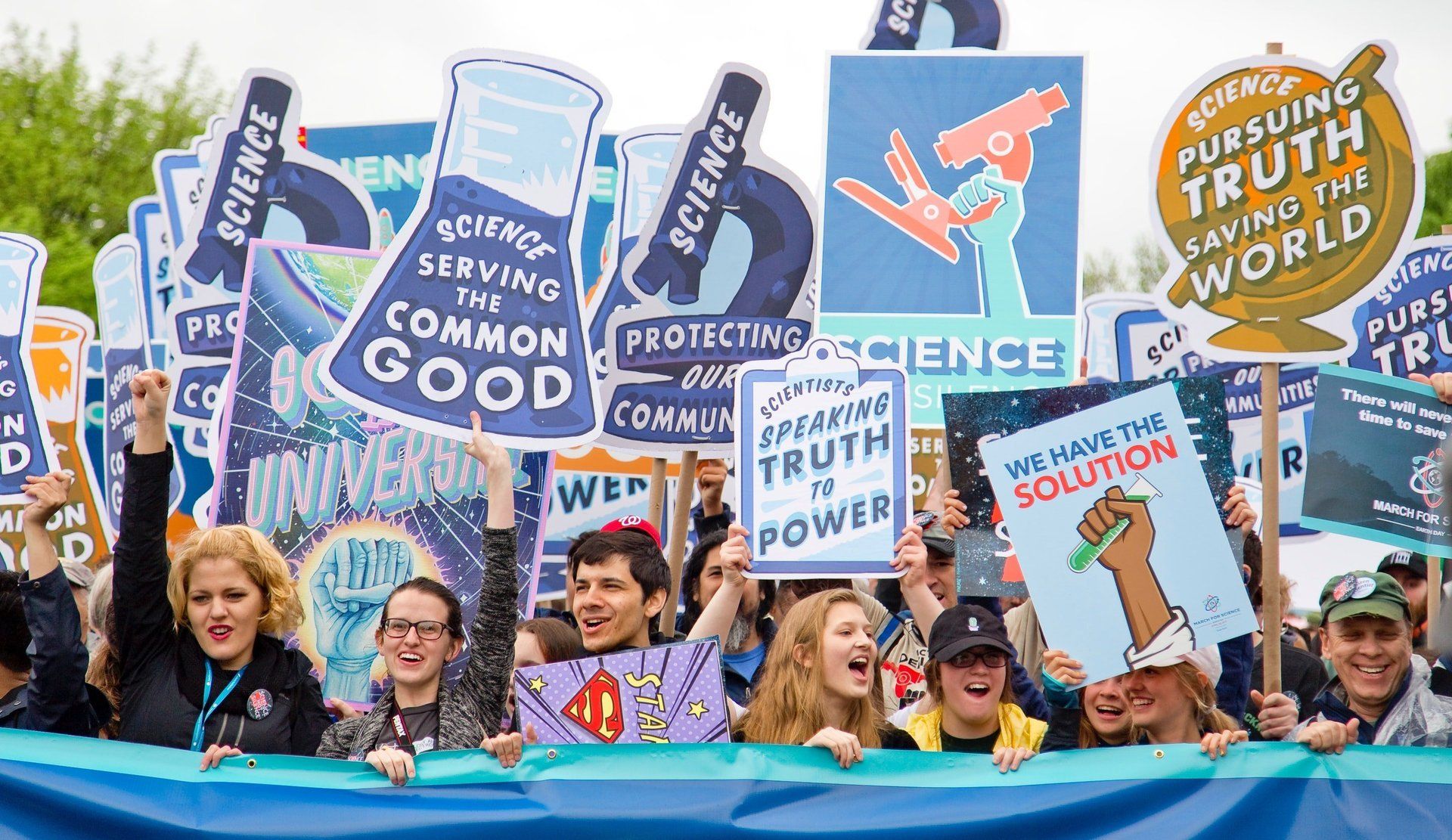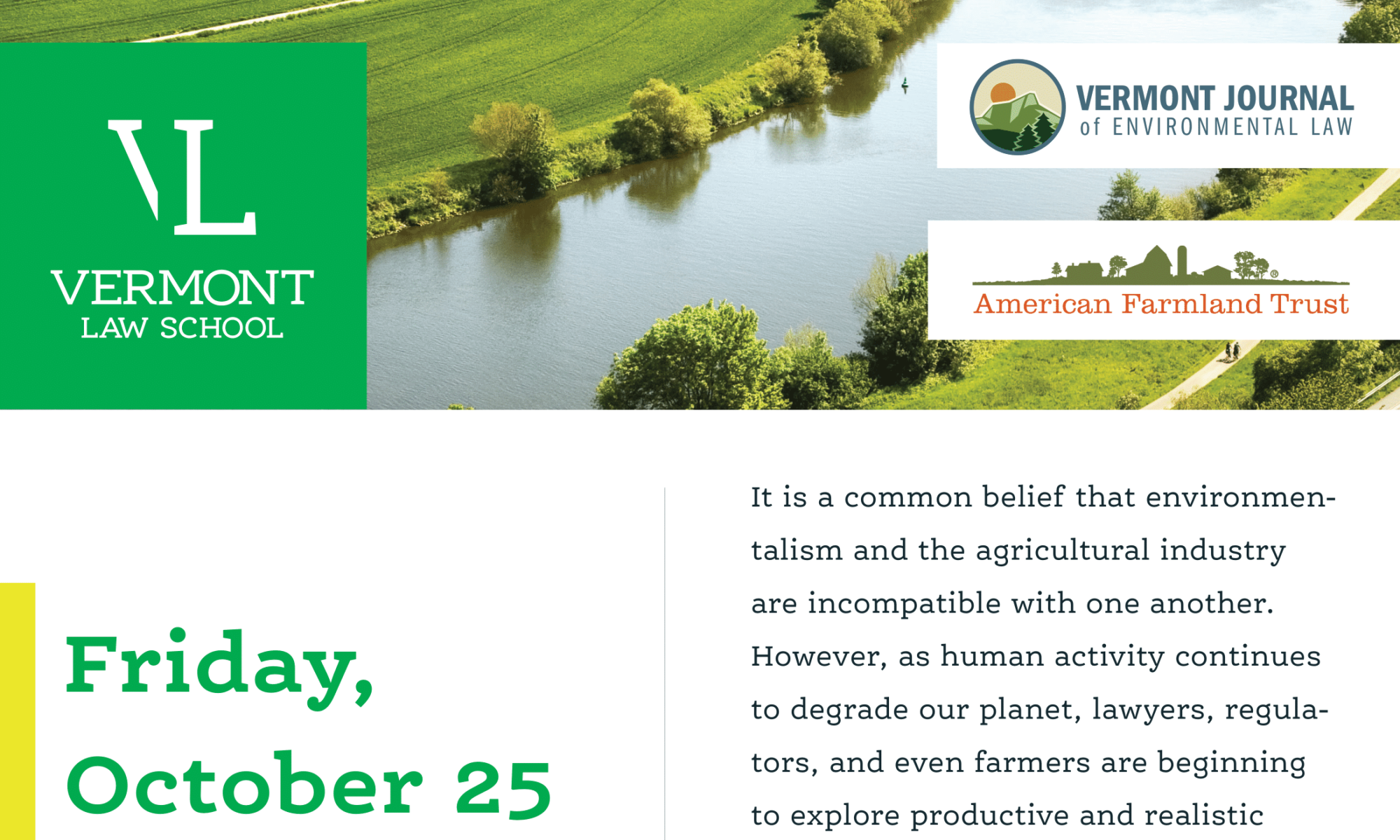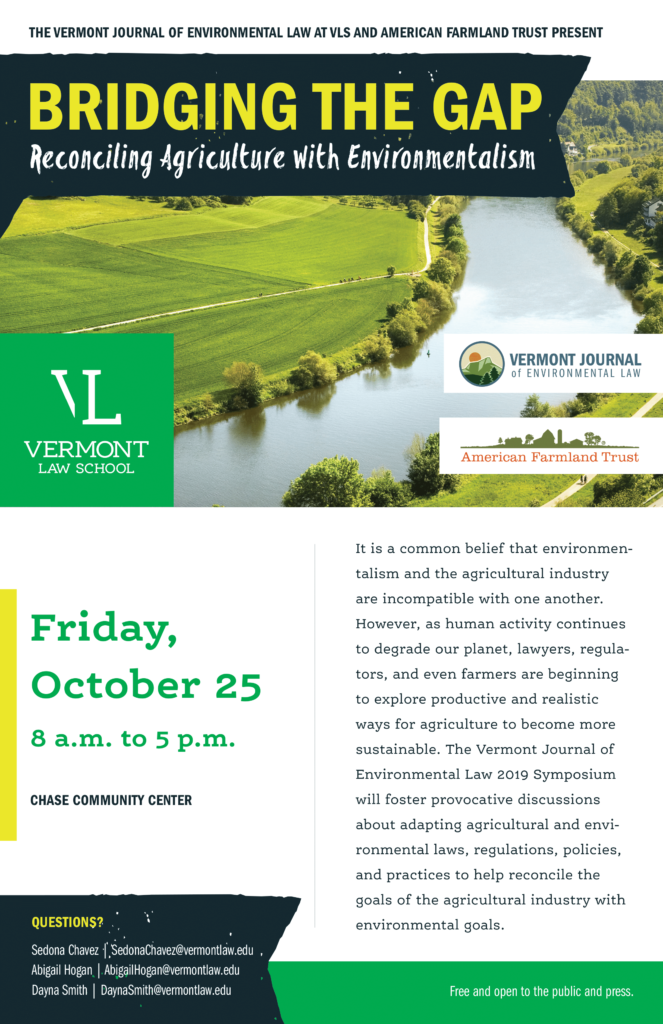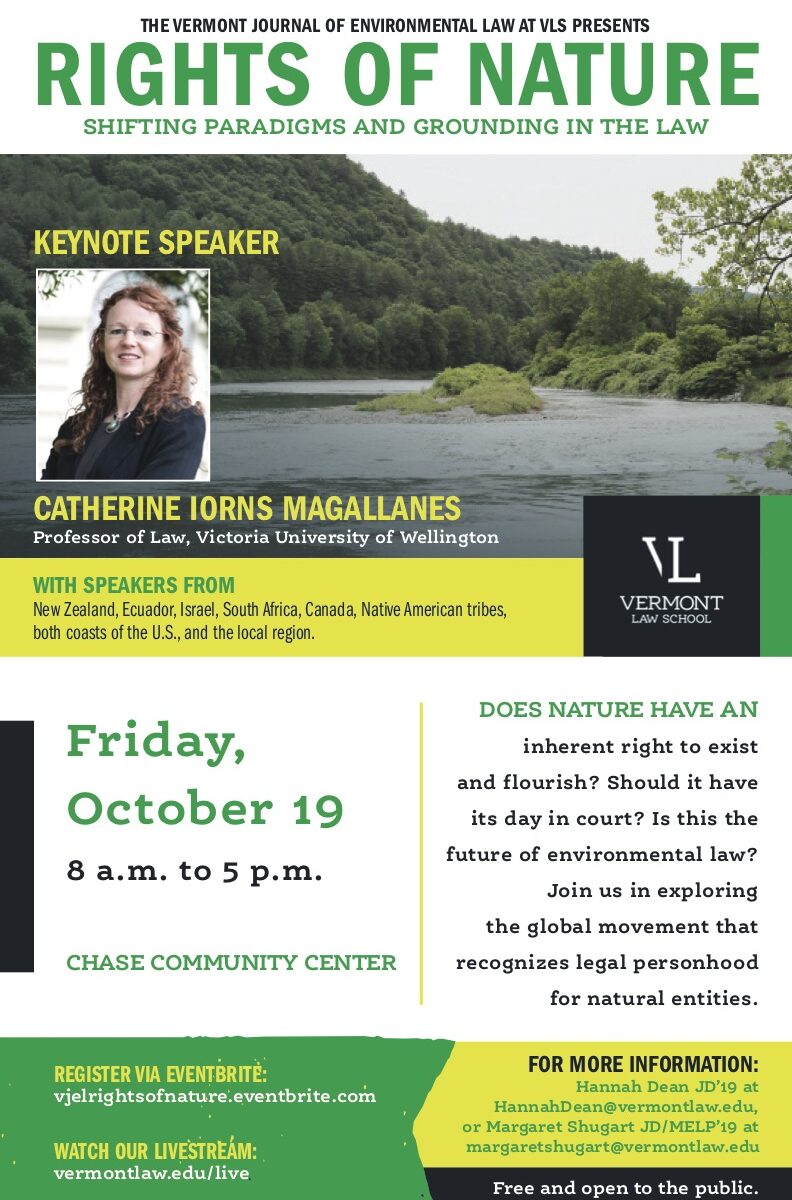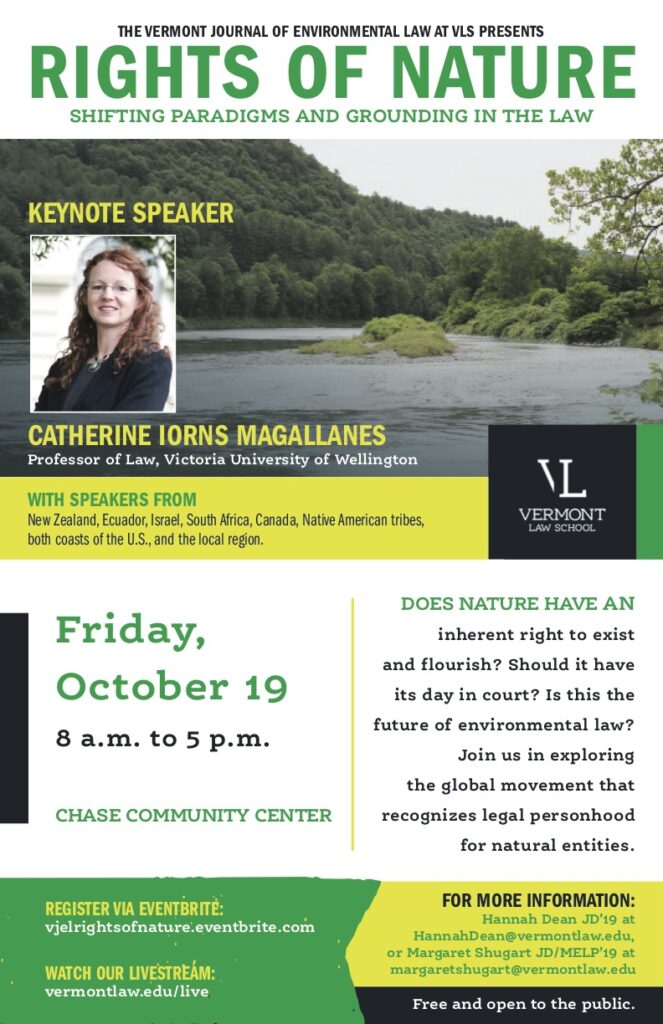This post is part of the Environmental Law Review Syndicate, a multi-school online forum run by student editors from the nation’s leading environmental law reviews.
__________________________________________
By Elizabeth Doherty*
I. Introduction
Climate change is internationally recognized as the biggest threat facing the world today.[1] This threat transcends politics, economics, and social views. In 2017 we saw historic flooding, hurricanes, wildfires, and now record snowfall in the southeastern United States.[2] These and other natural disasters are exacerbated by anthropogenic climate change. While it may be too late to prevent global temperatures from rising two degrees Celsius, we must make whatever changes possible to prevent temperatures from rising even higher.
In the United States, almost one-third of total greenhouse gas (GHG) emissions come from the electricity sector alone.[3] If we transition our electricity sector to renewable technologies, we will be able to eliminate a significant portion of our GHG contributions. Further, the transportation sector accounts for another 28% (in 2016) of U.S. GHG emissions.[4] If we electrify the transportation sector and transition to renewable energy technologies, we will be able to eliminate more than half of our national GHG emissions. If we are to successfully combat climate change, the United States must become a global leader and make significant steps toward the transition to a clean energy economy.
The United States federal government has used the tax system to change behavior for decades and as our electricity industry introduces cleaner technologies, that system should be leveraged again to include all economic classes in the energy transition. The Energy Policy Act of 1992 created the renewable electricity production tax credit (PTC), which provides a per-kilowatt-hour credit for business investments in qualified renewable energies.[5] Solar photovoltaic technologies were not added to this list until the American Jobs Creation Act of 2004 (AJCA).[6] In addition to the PTC, Congress also created the residential investment tax credit, also known as the residential energy efficient property credit, or “Section 25D credit,” which provides a 30 percent tax credit on investment for renewable energy equipment placed in service during the taxable year.[7] These efforts, along with other federal and state initiatives, have led to dramatic increases in renewable technology deployment and integration over the past decade.[8]
Despite the dramatic progress seen in recent years, legislatures have failed to include low-income residential consumers in the transition to clean energy production.[9] The PTC is applicable only to businesses that produce electricity from renewable sources and the Section 25D credit is only accessible to those residential customers with enough tax appetite.[10] This has contributed to a growing cost-shifting issue for residential solar photovoltaic investment.[11] Cost-shifting occurs because most current state net metering policies allow residential rooftop solar customers to eliminate their electric bill altogether and avoid paying for the fixed costs associated with using the electric grid.[12] With current ratemaking, this leaves the utility with a smaller pool of customers from whom they can recover those costs, thus raising the electric bills of non-solar customers and creating a cross-subsidy effect.[13]
This paper explores the current status of federal incentives for residential photovoltaic investment, explains the negative externality associated with these incentives, and proposes a solution. The solution involves an environmental tax on electricity generators based on the carbon-emitting quality of the utilized resources. The revenue from the carbon tax will then be used to fund a low-income grant program for residential renewable solar photovoltaic investment.
II. How Does the Section 25D Credit Affect Residential Rooftop Solar?
The Section 25D credit is a key incentive for solar investment in the United States.[14] The Section 25D credit was originally introduced in the Energy Tax Act of 1978 and has been amended and extended four times since.[15] Most recently, the Preventing Americans from Tax Hikes Act extended the Section 25D tax credit for qualifying solar technologies through 2021.[16] Although this program has been widely successful, it has contributed to the increasing cost-shifting effect, disproportionately impeding low-income participation in the energy transition.[17]
The Section 25D Tax Credit
The Section 25D tax credit currently “allows taxpayers to claim a tax credit for properties that generate renewable energy…that they install on their residence.”[18] The credit value is equal to 30% of the purchase and installation expenditures, with no maximum value, for solar technologies until 2020.[19] From 2020 to 2021 the credit will be reduced to 26%. In its final year, 2021 to 2022, the credit will be further reduced to 22% of expenditures.[20]
Cost-Shifting Effect of Current Incentives
The Section 25D tax credit contributes to the cost-shifting effect on non-solar residential consumers.[21] Most states with rooftop solar integration have enacted net metering policies to compensate residential customers for their energy production on their electric bill.[22] Net metering is an accounting mechanism that provides utility customers that have an interconnected, operating solar system with a credit on their electric bill, most often equal to the retail rate of electricity multiplied by kilowatt-hours (kWhs) produced.[23] Total bill amounts represent the month’s net energy usage. This is done using a bidirectional meter that flows in one direction when the customer is consuming more than they are generating and flows in the opposite direction when the customer is producing more than they consume.[24] At the end of each billing cycle, the utility will calculate each customer’s net usage and bill them accordingly (charge if consumption is higher than production or credit if production is higher than consumption).[25]
Current utility rate structures require rates that are “just and reasonable” to prevent excessive utility profits and unreasonable price discrimination while providing utilities with enough revenue to operate and more.[26] In making such determinations, the regulatory body, usually called the state public utility commission (PUC), will allocate all fixed costs associated with delivering electricity to customers (such as grid maintenance) evenly to all the utility’s customers.[27] When the solar electricity-producing customers are able to offset this cost with net metering, the public utility commission will necessarily allow the utility to raise their rates to maintain cost recovery.[28] The solar customers will not realize the increase in rates because their net metering rate will also increase.[29] Non-solar customers, however, see their rates increase. In sum, when residential electricity consumers invest in solar technology, utilities shift the customers’ portion of fixed costs to other residential electricity consumers who have not invested in solar technology.
Current incentive programs exacerbate the cost-shifting effect of net metering.[30] With the current investment tax credit available for residential solar projects, the customer must have the requisite tax appetite to take advantage of any tax incentive.[31] Customers that do not have the tax appetite are less likely to invest in solar and are therefore more likely to experience cost-shifting.[32]
Disproportionate Impact on Low-Income Communities
Low-income consumers are particularly vulnerable to electricity price fluctuations and the cost-shifting effect which, coupled with other barriers to entry into the solar industry, further disadvantage these communities.[33] The increase in solar technology integration in the United States provides an opportunity to address inequities associated with low-income communities, such as the high cost of housing, unemployment, and environmental justice.[34] Energy is generally accepted as a “basic need in modern industrialized societies.”[35] Low-income residents in the United States spend a higher percentage of their household income on energy expenditures, partly because it is more difficult for them to adjust to price fluctuations with less energy-efficient homes.[36] Further, once higher-income households have invested in rooftop solar photovoltaics, the low-income customers will likely be the only customer class left paying the utilities’ fixed costs.
Low-income households are also uniquely vulnerable to fluctuations in energy prices due to their proportionally high energy burden compared to moderate- and high-income households.[37] Economists use the phrase “energy burden” when referring to “the disproportionate allocation of financial resources among low-income households on energy expenditures.”[38] More specifically, “[l]ow-income households spend 10 percent or more of their income on energy expenses,” and “the very poor . . . spend an upwards of 20 percent on energy purchases.”[39] As a result, it is particularly important to create incentive programs that will not exacerbate this burden. Additionally, electricity demand for low-income households is relatively price inelastic;[40] therefore, they are acutely susceptible to any changes in electricity rates. Policies that increase the price of electricity also increase the likelihood of energy poverty and the chances that a low-income household will not be able to pay their bill and their electricity will be shut off. In the winter or other extreme weather events, this could lead to death.[41] As such, low-income residents are uniquely vulnerable and disproportionately affected by the cost-shifting effect of net metering policies.
In addition to lack of capital, low-income customers face other barriers to entry into the solar photovoltaic generation market.[42] These barriers include a lack of homeownership and poor credit scores.[43] Any resident that desires to install solar panels to generate electricity must own property upon which the system can be built.[44] If a customer is renting their dwelling, or living in an apartment complex without roof rights, then the customer cannot install solar on their property without the landlord’s permission.[45] Even if ownership is not an issue, low-income households typically lack the credit necessary to take out a loan to finance the system.[46]
The cross-subsidy effect increases electricity costs for non-solar customers who are often low-income customers, and therefore, applies almost exclusively to the class of citizens least able to handle such a burden.
III. Proposed Federal Carbon Tax
There should be a federal carbon tax imposed on electric generating facilities proportional to their carbon footprint. To address the cross-subsidy issues with net metering, tax revenues can then fund a grant to low-income users subsidizing solar photovoltaic system installation. In contrast with other forms of taxation, environmental taxation “is not designed primarily for revenue-raising or as an instrument directed to marginally influence behavior, but rather strives for fundamental and structural changes in the behavior of economic actors.”[47] The carbon tax should be designed to fundamentally and structurally change electricity suppliers’ purchasing behaviors from fossil fuel generation to renewable generation.
For carbon-intensive fuels, such as coal, the tax rate would be higher than the rate for less carbon-intensive fuels, such as natural gas. The tax rate should be set equal to the average social cost of carbon to reflect the cost to society of using such fuels and to include as many externalities as possible in the calculation.[48] Finally, the revenues from this program must be earmarked first for a low-income residential grant program to stimulate rooftop solar investment and secondly to fund energy efficiency initiatives. This comprehensive, double-dividend tax should help alleviate the cross-subsidy effects on low-income communities.
Tax Base
The tax base should include all electric-generating facilities that release carbon dioxide. The generators are directly responsible for emissions related to electricity production and are therefore the most appropriate party to tax. Further, several states have begun transitioning away from traditional rate regulation and toward retail choice. In such states, electric utilities were once capable of owning and producing their own electricity but are now prohibited from doing this and must purchase the electricity wholesale from third-party producers.[49] If this proposed federal tax were imposed on utilities, it would affect each state differently, depending on how their rate regulation is structured. Although generating facilities will likely pass the cost of this new tax on to power purchasers, the tax will still affect behavioral change at all levels in the energy market, from energy producer to consumer. This will make large-scale renewables more cost-competitive with other generation sources and further incentivize a transition away from fossil fuels.
FERC Order No. 888, issued in 1996, allowed states to deregulate their wholesale markets by unbundling wholesale transactions from the generation and distribution components to encourage open access and competition.[50] In those states, energy generators and distributors (called distribution utilities) are not the same entity. For example, Massachusetts in 1997, with the Electric Industry Restructuring Act, became one of the early states to adopt this new, deregulated model of electricity regulation.[51] As a result, a federal tax on utilities would affect each state differently. Further, states that have deregulated, such as Massachusetts, would be disproportionately impacted. It would not be proper for utilities in restructured states to be taxed based on the carbon content of their customers’ electricity because they are not responsible for the type of energy delivered to their customers. This would not result in the behavioral change that this proposed tax is designed to effect. If the tax were imposed on generating facilities, the states where utilities own their generation would not be unjustly affected because they would still be the owners of the production facility and would therefore be considered generators and be taxed similarly to the other generators.
Electric generating facilities will likely pass the cost of this tax through to electricity suppliers, which would help influence the behavior of the people responsible for deciding between energy sources. If generators pass the cost of the tax to their consumers, then renewable technologies will be more cost-competitive and consumers will be more likely to invest in a sustainable future. Further, as suppliers invest in renewable technologies, the overall cost of renewable technologies for all customer classes is likely to decrease. A low-income renewable energy grant, funded by the tax revenues, should make up the remaining difference.
The tax base should be the total number of kWhs produced at each facility. Coal-fired power plants consume some of the energy that they produce in the process of carbon-capture and sequestration. For these and other similarly-situated facilities, the generator should also be responsible for the carbon dioxide emissions resulting from the energy that is consumed on-site. Thus, as energy is being generated, the facility’s tax base is increasing. While this method is most in line with the goals of this proposed carbon tax, an economic analysis should be conducted to consider whether this cost would discourage carbon-capture and sequestration by coal-fired generating units. If it would discourage such behaviors, then Congress should consider exempting the kWhs consumed on-site.
Tax Rate
The tax rate should be the average social cost of carbon as applied to each generating facility such that their per kWh charge reflects the social cost of carbon emitted for each kWh produced at that particular facility. In other words, if the social cost of carbon is x per ton of carbon dioxide, then a facility’s tax rate would be equal to the amount of carbon dioxide emitted to produce a single kWh multiplied by x. This rate would then be multiplied by the total kWh production of the facility to get the generator’s final tax liability.
There is a higher administrative burden associated with this tax rate structure because each facility would have its own rate, but it would be a more reflective tax policy. By linking the tax rate directly with the negative behaviors that the tax seeks to change, this policy follows traditional Pigouvian tax theory. In 1920, A. C. Pigou concluded,
[T]here is no reason to expect that self-interest will tend to bring about equality between the values of marginal net social products of investments in different industries when the values of social net product and of trade net product in those industries diverge. . . . It is, however, possible for the State, if it so chooses, to remove the divergence in any field by “extraordinary encouragements” or “extraordinary restraints” upon investments in that field. The most obvious forms, which these encouragements and restraints may assume, are, of course, those of bounties and taxes.[52]
This proposed tax shall address the divergence between electricity generators’ carbon dioxide pollution and its social costs. In this situation, carbon dioxide’s negative externality requires the “extraordinary restraints,” or tax. The revenue shall be used to stimulate the positive externality and fund the “extraordinary encouragement” through a low-income grant program.
Other Factors for Consideration
The tax, as proposed, would not require an administrative burden beyond establishing the tax rates for each type of generating facility. It would be simplest for each regional transmission organization (RTO) or independent system operator (ISO) to administer the carbon tax program. These entities already have a record of electricity production from each generator and would be able to most efficiently collect the tax. Once the tax rate has been calculated and implemented, the RTO/ISO could impose and collect the tax at the time of sale of any electricity in the wholesale market. This would not require a major change in current market operations.
There is a very low likelihood for fraud or abuse. This tax will charge only electricity generators; therefore, the pool of tax payers is limited and there is necessarily a record of transactions to verify production levels. A tax-liable entity would not be able to “hide” production or otherwise lie about production because it is recorded in the regional Generation Information System.[53]
Some states and regions have already implemented carbon pricing mechanisms and applied them directly to electricity generators. These areas include California’s cap and trade system, the Regional Greenhouse Gas Initiative, and the recently adopted Massachusetts emissions trading scheme.[54] In these areas, the proposed carbon tax would be an additional incentive. However, if a state adopted a carbon tax that directly charged electric generators, the generators should be able to deduct this from their federal carbon tax liability. This would allow states to adopt additional carbon taxes as they see fit.
Not all of the electricity consumed in the United States has been generated in the United States. For example, the Northeast imports electricity from Hydro-Quebec, a large-scale hydroelectric facility in Canada.[55] For imported electricity, there should be a border-tax adjustment. This proposal does not suggest taxing any emissions from large-scale hydroelectric facilities.
IV. Low-Income Residential Grant Program
The revenues of the carbon tax should be earmarked for a low-income residential grant program for investments in solar photovoltaic systems. This program would provide grants directly to consumers looking to install solar photovoltaic systems. Most low-income households have neither the tax appetite to take advantage of current tax incentives nor the credit required for loan programs. Further, these households do not have the upfront capital necessary for any renewable investment.[56] The proposed carbon tax and other federal incentives for renewable technology integration have exacerbated the cost-shifting effect which this grant program would help remedy.
The administrative burden to implement the grant program will be higher than that of implementing another tax credit program; however, another tax credit program would not address the problem that this program seeks to solve because low-income households do not have the requisite tax appetite for tax credits. A refundable tax credit might also have a lower administrative burden, but low-income households likely could not wait months to realize the credit. This grant program would allow the government to send a check directly to the low-income customer prior to the customer making the up-front investment. This may also help a low-income customer secure loan financing if they can demonstrate that they will receive the grant money.
Double-Dividend Tax Theory
By earmarking the tax revenues to encourage low-income investments in renewable energy, this policy is seemingly at odds with the double-dividend tax theory. However, the grant program will reduce another economically inefficient tax burden, which is consistent with double-dividend theory. This theory describes two dividends: “[t]he first dividend refers to the environmental impact of the environmental tax and the second to the economic impact of the use of the tax revenues.”[57] Here, the first dividend of the carbon tax addresses the environmental impact of carbon dioxide emissions. The second dividend is the use of tax revenue to remedy the economic impacts of other renewable state and federal subsidies on low-income communities. The proposed tax policy includes dedicating the revenue to a particular purpose, but that purpose is to reduce the existing, economically inefficient burden on low-income, residential electricity consumers.
The Low-Income Grant Program
The Internal Revenue Service would administer the low-income grant program on a per-application basis. Low-income residents who have purchased, installed, and placed into service solar facilities for use at their residence (or have contracted to do so) shall certify as such and receive immediate compensation. This compensation may be signed over to a loan servicer in advance to use as collateral for the consumer to be approved for a loan to purchase the solar system. If a low-income resident decided to invest in solar photovoltaics through a cooperative, partnership-flip agreement, or community solar arrangement, they would similarly be able to sign over their grant check.
The grant program should offer the same value as the Section 25D tax credit: 30% of the overall investment. Because these programs are effectively exclusive and together should cover all residential customer income levels, it is fair to set the incentive amounts equal. Although there likely will not be customers that qualify for both incentives, there should nonetheless be a provision restricting any household from realizing benefits from both programs. Finally, this grant program should be continued and extended for as long as there is a similar incentive provided, through tax credits, to moderate- to high-income residential customers.
Energy Efficiency and Climate Adaptation
Any and all funds that are not distributed through the low-income grant program shall be distributed to the states on a per-capita basis with the stipulation that 80% of the funds be used towards increasing energy efficiency and 20% towards climate adaptation measures within the state. The carbon tax will likely generate substantial revenue and not all of it will be realized by low-income residential customers. The purpose of this tax policy is to help all citizens of the United States transition into a clean, sustainable energy future. Energy efficiency measures and climate adaptation investments are critical pieces of this transition.
Energy efficiency investments will reduce load on the electric grid, reduce electricity demand and facilitate the movement towards electric transportation. If energy efficiency can reduce residential electricity demand, it will become easier to integrate electric transportation. These changes can help ensure an ongoing, stable society in the face of climate change threats.
V. Conclusion
Current federal tax incentives for residential investments in renewable solar photovoltaic systems exclude low-income consumers. Low-income consumers often do not have the tax appetite to take advantage of tax credits, lack the homeownership requirement for the Section 25D credit, and do not have the funding to invest upfront, nor the credit to obtain a loan. As such, current net metering policies encourage moderate- to high-income investment, creating a cross-subsidy effect and increasing the growing class divide between high-income citizens and low-income citizens.
It is imperative that we transition our current electricity sector to a clean, renewable energy economy if we hope to mitigate climate change impacts on our society. This transition will require all members to adjust to a new economy, a new electric grid, and other demand-side changes, such as driving electric vehicles. A whole-system evolution of this type requires the participation and inclusion of all members of society. As such, the federal government needs to stimulate and encourage investments from all customer classes. The current system only provides incentives for moderate- to high-income residents.
The carbon tax and low-income grant program proposed in this paper would help transition all sectors of the American economy to a low-carbon future and would address the disproportionate impact of other, cost-shifting renewable incentive programs on low-income communities.
This carbon tax would increase the cost-competitiveness of large-scale renewable energy facilities by increasing the cost of carbon-intensive energy generation. It would directly and proportionally punish the emitters of carbon dioxide pollution for the social cost of their actions. This direct link between the negative behavior and the tax creates the most efficient tax mechanism to encourage behavioral change. The tax revenues would then be dedicated to a low-income grant program with excess funds dedicated to energy efficiency and climate change adaptation measures. This policy will further encourage renewable energy integration and will discourage fossil-fuel electricity generation.
If we are to take climate change seriously, the United States federal government should strongly consider a federal carbon tax, similar to the one proposed here, and invest 100% of the proceeds in preparation for the upcoming energy transition. This tax policy would get us one step closer to securing a safe, healthy, and sustainable future for our generations and generations to follow.
*Elizabeth Doherty, 3L, Vermont Law School and Symposium Editor, Vermont Journal of Environmental Law
[1] Jake Schmidt, Since 2005 the G7 Has Recognized Threat of Climate Change, NRDC (May 25, 2017), https://www.nrdc.org/experts/2005-g7-has-recognized-threat-climate-change.
[2] Adam B. Smith, 2017 U.S. Billion-Dollar Weather and Climate Disasters, Climate.gov (Jan. 8, 2018), https://www.climate.gov/news-features/blogs/beyond-data/2017-us-billion-dollar-weather-and-climate-disasters-historic-year.
[3] Sources of Greenhouse Gas Emissions Envtl. Protection Agency (Apr. 11, 2018), https://www.epa.gov/ghgemissions/sources-greenhouse-gas-emissions.
[4] Id.
[5] 26 U.S.C. § 45 (2012); Energy Policy Act of 1992, Pub. L. No. 102–486, 106 Stat. 2776 (1992).
[6] American Jobs Creation Act of 2004 (AJCA), Pub. L. No. 108–357, 118 Stat. 1418 (2004).
[7] 26 U.S.C. § 25D (2016); Margot L. Crandall-Hollick & Molly F. Sherlock, Cong. Research Serv., R42089, Residential Energy Tax Credits: Overview and Analysis 3 (2016).
[8] Gideon Weissman et al., Env’t Am., Renewables on the Rise 10 (2017).
[9] Grid Alternatives et al., Low-Income Solar Policy Guide 8 (2016).
[10] 26 U.S.C. §§ 48, 25D.
[11] Grid Alternatives et al., supra note 9, at 13.
[12] See generally Jim Lazar, Regulatory Assistance Project, Electricity Regulation in the US: A Guide 79 (2d ed. 2016) (describing net metering policies).
[13] Cherrelle Eid et al., The Impact of Net-Metering on Cross Subsidies Between Network Users 1 (2014).
[14] Sadie Cox et al., Clean Energy Sols. Ctr., Solar Power: Policy Overview and Good Practices 12 (2015).
[15] Crandall-Hollick & Sherlock, supra note 7, at 17–20.
[16] Id. at 20.
[17] Grid Alternatives et al., supra note 9, at 8.
[18] Crandall-Hollick & Sherlock, supra note 7, at 3.
[19] Id.
[20] Id. at 20.
[21] Grid Alternatives et al., supra note 9, at 8.
[22] Luke Richardson, Virtual Net Metering: What is It? How Does It Work?, EnergySage (Sept. 8, 2016) http://news.energysage.com/virtual-net-metering-what-is-it-how-does-it-work/.
[23] Net Metering, Solar Energy Indus. Ass’n, https://www.seia.org/initiatives/net-metering (last visited Apr. 25, 2018).
[24] Lazar, supra note 12, at 134.
[25] Eid et al., supra note 13, at 1.
[26] Leonardo Giacchino & Jonathan Lesser, Fundamentals of Energy Regulation 48 (2d ed. 2013).
[27] Id. at 179.
[28] Id. at 223.
[29] Id.
[30] Grid Alternatives et al., supra note 9, at 8.
[31] Mark Bolinger et al., Lawrence Berkeley Nat’l Lab., An Analysis of the Costs, Benefits, and Implications of Different Approaches to Capturing the Value of Renewable Energy Tax Incentives i (2014).
[32] Id.
[33]Grid Alternatives et al., supra note 9, at 8.
[34] Id. at 11.
[35] Diana Hernández & Stephen Bird, Energy Burden and the Need for Integrated Low-Income Housing and Energy Policy 7 (Policy Studies Org. ed. 2010).
[36] Id.
[37] Id.
[38] Id.
[39] Id. Note that these statistics refer to overall home energy costs and are not limited strictly to electricity costs.
[40] Grid Alternatives et al., supra note 9, at 8.
[41] See, e.g., Inst. for Energy & the Env’t, Vt. Law Sch., Energy Costs and Burdens in Vermont (2014) (analyzing energy poverty in Vermont).
[42] Grid Alternatives et al., supra note 9, at 8–11.
[43] Id.
[44] Id. at 9.
[45] Id. While it is possible to purchase and install a solar facility with an additional contract with the landlord, practical considerations make it highly unlikely and infeasible.
[46] Id. at 8.
[47] Michael G. Faure & Stefan E. Weishaar, The Role of Environmental Taxation: Economics and the Law, in Handbook of Research on Environmental Taxation 399, 399 (Janet E. Milne & Mikael Skou Andersen eds., 2012).
[48] There is not a general consensus on what the true social cost of carbon is; therefore the rate should be based on the average social cost of carbon as determined by expert agencies.
[49] Kenneth C. Baldwin, Energy Facility Siting, in Capturing the Power of Electric Restructuring 133–173, 135 (Joey Lee Miranda ed., 2009); see John W. Wadsworth, Electric Industry Restructuring in Massachusetts 103 (explaining how Massachusetts is an example of a state that has deregulated its electricity sector to disallow utilities from owning their own generation, allowed new generators to enter the market, and created renewable incentives within this framework to encourage renewable development).
[50] Id.
[51] Gregory Bialecki & Richard Sullivan, Jr., Exec. Office of Hous. & Econ. Dev. & Exec. Office of Energy & Envtl. Affairs, Recent Electricity Market Reforms in Massachusetts 4 (2011).
[52] Janet E. Milne & Mikael Skou Andersen, Introduction to Environmental Taxation Concepts and Research, in Handbook of Research on Environmental Taxation 15, 16 (Janet E. Milne & Mikael Skou Andersen eds., 2012) (quoting A. C. Pigou, The Economics of Welfare v (1920)).
[53] See, e.g., Resource Mix, ISO-New England (Apr. 27, 2018), https://www.iso-ne.com/about/key-stats/resource-mix.
[54] Massachusetts Introduces Additional Cap-and-Trade System, Int’l Carbon Action Partnership (ICAP), https://icapcarbonaction.com/en/news-archive/483-massachusetts-introduces-additional-cap-and-trade-system (Apr. 27, 2018); Jackson Morris & Bruce Ho, California Leads Off: Now RGGI Must Grab the Climate Baton, NRDC (July 19, 2017), https://www.nrdc.org/experts/jackson-morris/california-leads-now-rggi-must-grab-climate-baton.
[55] See generally Inter-Area Operating Agreements and Asset Owner Agreements, ISO-New England (Apr. 27, 2018), https://www.iso-ne.com/participate/governing-agreements/interconnection-operating-asset-owners/ (detailing ISO-NE’s agreement with Hydro-Quebec).
[56] Grid Alternatives et al., supra note 9, at 8.
[57] Milne & Anderson, supra note 52, at 24.



